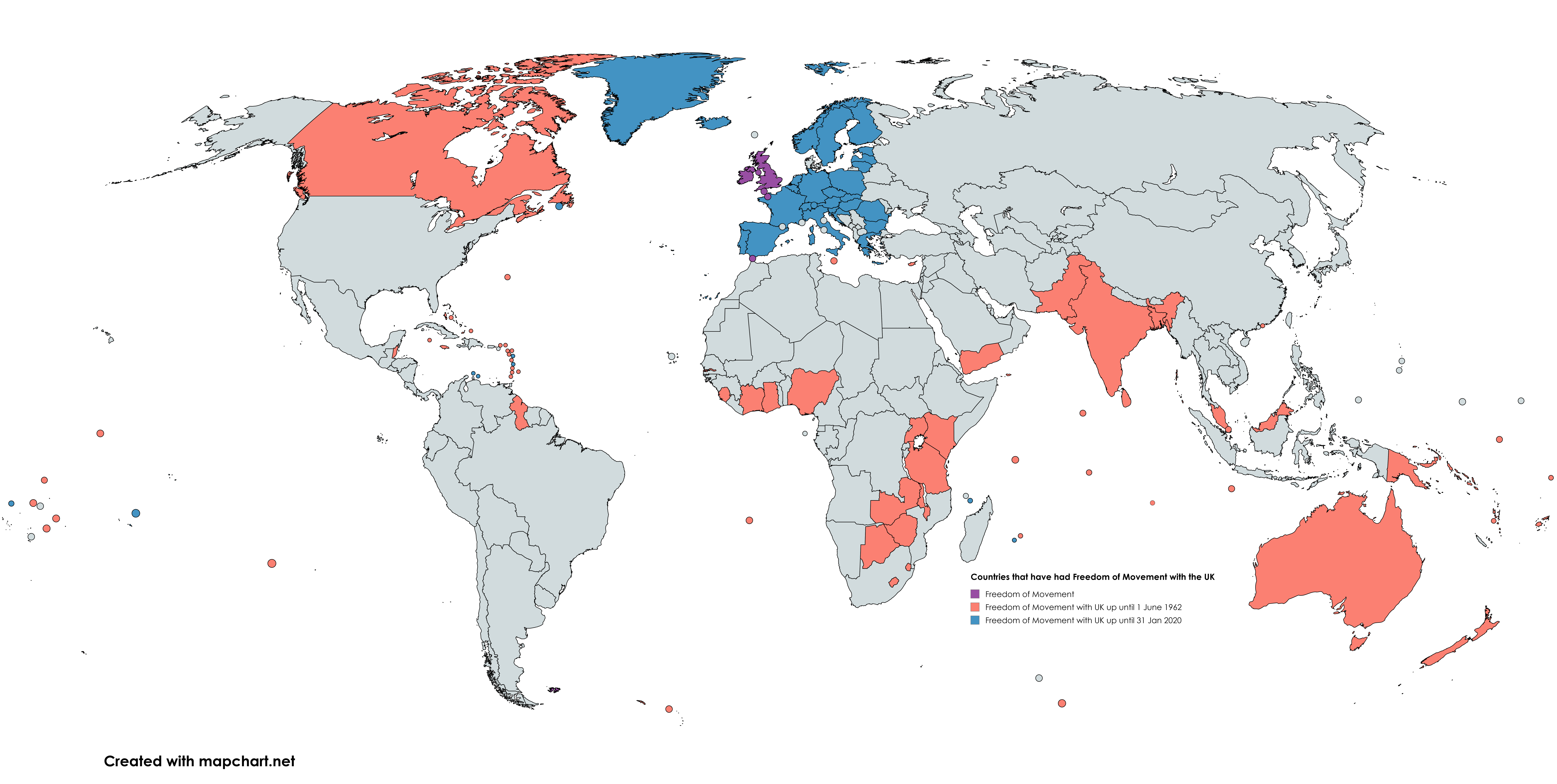UK Historical Freedom of Movement Regimes Map


Marcus Rodriguez
Historical Geography Expert
Marcus Rodriguez specializes in historical cartography and geographic data analysis. With a background in both history and geography, he brings unique...
Geographic Analysis
What This Map Shows
This map illustrates the historical freedom of movement regimes in the United Kingdom, providing a visual representation of the various policies impacting immigration and residency over the years. It highlights key changes in regulations and their geographical implications, allowing viewers to grasp how these shifts have influenced the UK’s demographic landscape.
Transitioning directly into the topic, the history of freedom of movement in the UK is rich and complex, shaped by socio-political factors and international agreements.
Deep Dive into Freedom of Movement in the UK
The concept of freedom of movement refers to the ability of individuals to travel, reside, and work in different countries without significant restrictions. In the UK, this has evolved notably, particularly in the context of its membership in the European Union (EU). Before the Brexit referendum in 2016, EU citizens enjoyed unrestricted access to live and work in the UK, a policy that significantly influenced demographic patterns and labor markets.
The UK’s historical approach to immigration can be traced back to the post-World War II period when the country faced labor shortages. The 1948 British Nationality Act was a pivotal moment, granting citizenship to subjects of the British Empire and allowing them the right to settle in the UK. This act led to significant migration from Commonwealth nations, particularly from the Caribbean, India, and Africa, reshaping the UK's cultural and ethnic diversity.
Interestingly, this freedom of movement was not without its controversies. As the UK grew more diverse, debates surrounding immigration intensified, culminating in various legislative changes. For instance, in the 1970s, the Immigration Act introduced measures to curb non-white immigration from Commonwealth countries, reflecting a shift towards more restrictive policies.
The UK's entry into the EU in 1973 marked another significant change in freedom of movement. With the Maastricht Treaty in 1992, EU citizens gained the right to live and work in any member state, fundamentally altering the migration landscape. This led to a substantial increase in European migrants, notably from Eastern European countries after the EU's eastward expansion in 2004 and 2007. Statistics show that in 2010, around 2.3 million EU citizens were living in the UK, contributing to various sectors, especially healthcare, construction, and hospitality.
However, Brexit in 2016 marked a dramatic shift in this narrative. The vote to leave the EU resulted in the end of free movement for EU citizens, replaced by a points-based immigration system introduced in January 2021. This new regime emphasizes skills and qualifications rather than nationality, aiming to attract a high-skilled workforce while limiting low-skilled immigration. The changes have significant implications for industries reliant on migrant labor, raising questions about the future of employment in sectors that traditionally depended on EU workers.
Regional Analysis
Examining the map, we can see how the freedom of movement regimes have had varying impacts across different regions of the UK. For example, London, with its vibrant job market and diverse communities, has historically attracted a high number of migrants, particularly from the EU. The capital's economy relies heavily on this influx, with sectors such as finance, technology, and creative industries benefiting immensely from the skills and talents brought in by migrants.
In contrast, regions in the North of England, such as areas in the North East or Yorkshire, have experienced different dynamics. These regions often relied on EU workers in sectors like agriculture and manufacturing, where labor shortages are now more pronounced following the end of free movement. Local businesses are grappling with recruitment challenges, leading to calls for revisiting immigration policies to address these issues.
Furthermore, Scotland has voiced its desire for a more inclusive immigration policy, emphasizing the need for migrant labor to support its economy, especially in rural areas where population decline is a concern. The devolved nature of governance allows for these regional disparities to surface, making the conversation about freedom of movement even more nuanced.
Significance and Impact
Understanding the historical freedom of movement regimes in the UK matters greatly as it affects not just immigration numbers but also the social fabric of the nation. The implications of these policies can be seen in the labor market, public services, and even cultural diversity. As the country grapples with its post-Brexit identity, how it approaches immigration will have lasting consequences.
Current trends indicate a more restrictive approach, yet there are growing discussions about the need for flexibility in the system to address labor shortages and demographic challenges. The ongoing debates surrounding immigration policies will continue to shape the UK's future, influencing everything from economic growth to social cohesion. Have you noticed how these shifts in policy resonate with discussions about identity and belonging in contemporary British society? The answers may lie in how effectively the UK navigates its complex relationship with freedom of movement moving forward.
Visualization Details
- Published
- September 18, 2025
- Views
- 64
Comments
Loading comments...